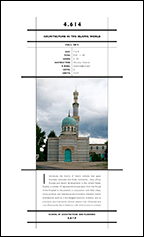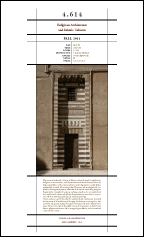Faculty» Past Faculty
Lecturer
(Visting Faculty Fall 2011)
 |
Biography
Christian is a PhD candidate and architect. He was awarded the Deutscher Akademischer Austausch Dienst (DAAD) Research Fellowship and will be spending the spring of 2012 at the Technische Universität Berlin. There he will be engaged primarily in archival research pertaining to his dissertation provisionally titled “German Architects and the Encounter with Egypt (1842-1914).” His work utilizes the material generated by these architects in order to contextualize their experience with Egypt and Islamic architecture. His research subjects range from the historiography of architecture in the nineteenth century to architecture’s formal and artistic expressions, as well as its cultural implications both in Germany and Egypt. He spent the fall 2011 semester as a visiting lecturer at MIT for the course Religious Architecture and Islamic Cultures.
Christian received his Master of Architecture from the University of Michigan and Bachelor of Arts in History from John Carroll University. |
Fall 2015 course
 |
4.614 Architecture in the Islamic World
Introduces the history of Islamic cultures that spans fourteen centuries and three continents – Asia, Africa, Europe – and recent developments in the United States. Studies a number of representative examples, from the House of the Prophet to the present, in conjunction with their urban, social, political, and intellectual environments. Presents Islamic architecture both as a full-fledged historical tradition and as a dynamic and interactive cultural catalyst that influenced and was influenced by the civilizations with which it came in contact. |
Fall 2011 course
 |
4.614 Religious Architecture and Islamic Cultures
This course introduces the history of Islamic cultures through its architecture. Religious, commemorative, and educational structures are surveyed from the beginning of Islam in 7th-century Arabia to its developing into a world religion professed by one-sixth of humanity today. The survey is chronological with em- phasis on distinguished patrons, influential thinkers, and outstanding designers. Representative examples of mosques, madrasas, mausolea, etc. are analyzed and their architectural, urban, and stylistic characteristics are examined in conjunc- tion with their historical, political, and intellectual settings.
Visual media are used to elucidate the artistic/cultural varieties and historical developments of this architectural heritage. Students are encouraged to raise questions and generate debates during the lectures as well as the discussion ses- sions. The aim is to explore all possible venues of interpretation to better locate Islamic religious architecture within its regional, pan-Islamic, and universal and cross-cultural contexts. |


